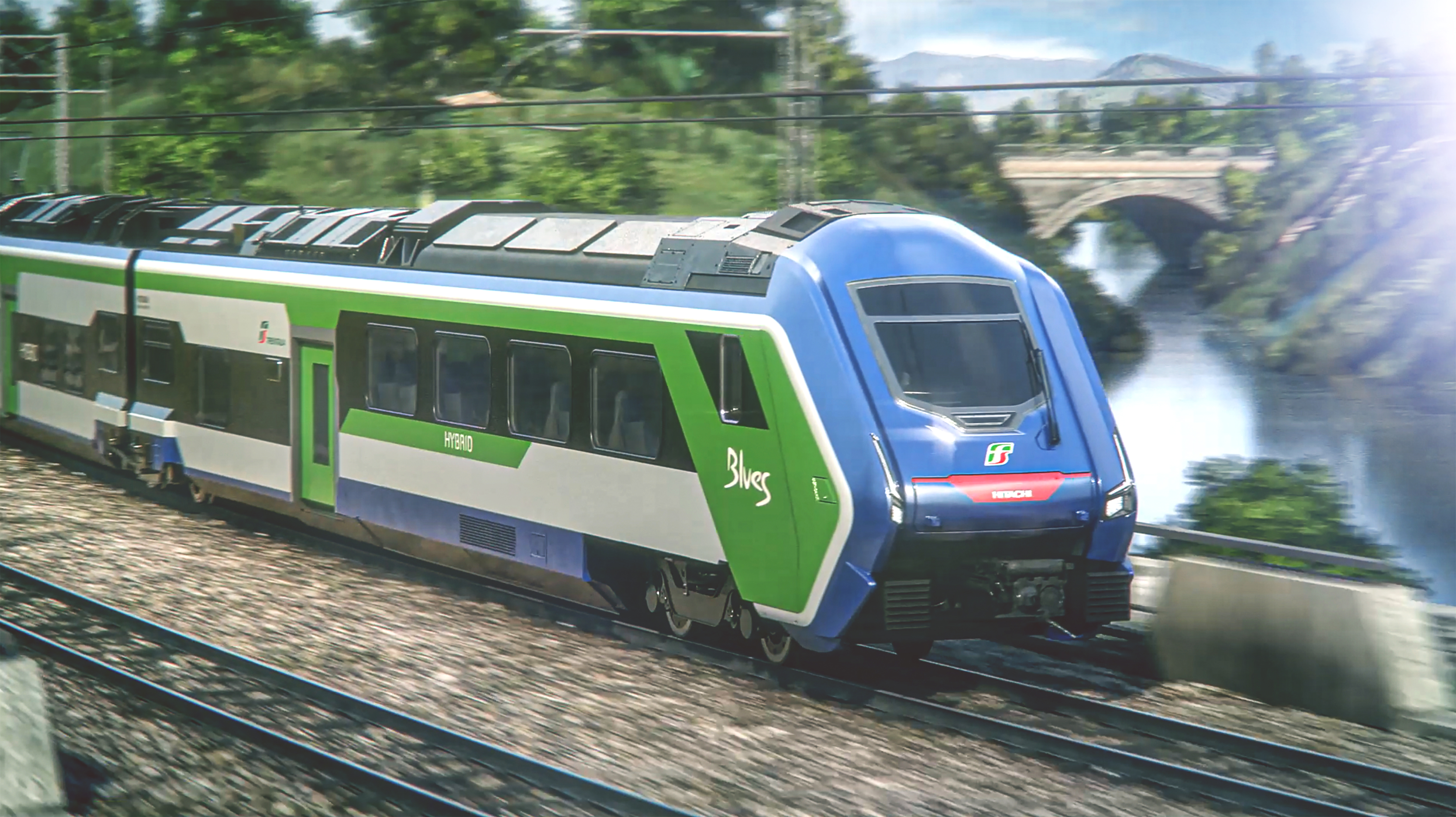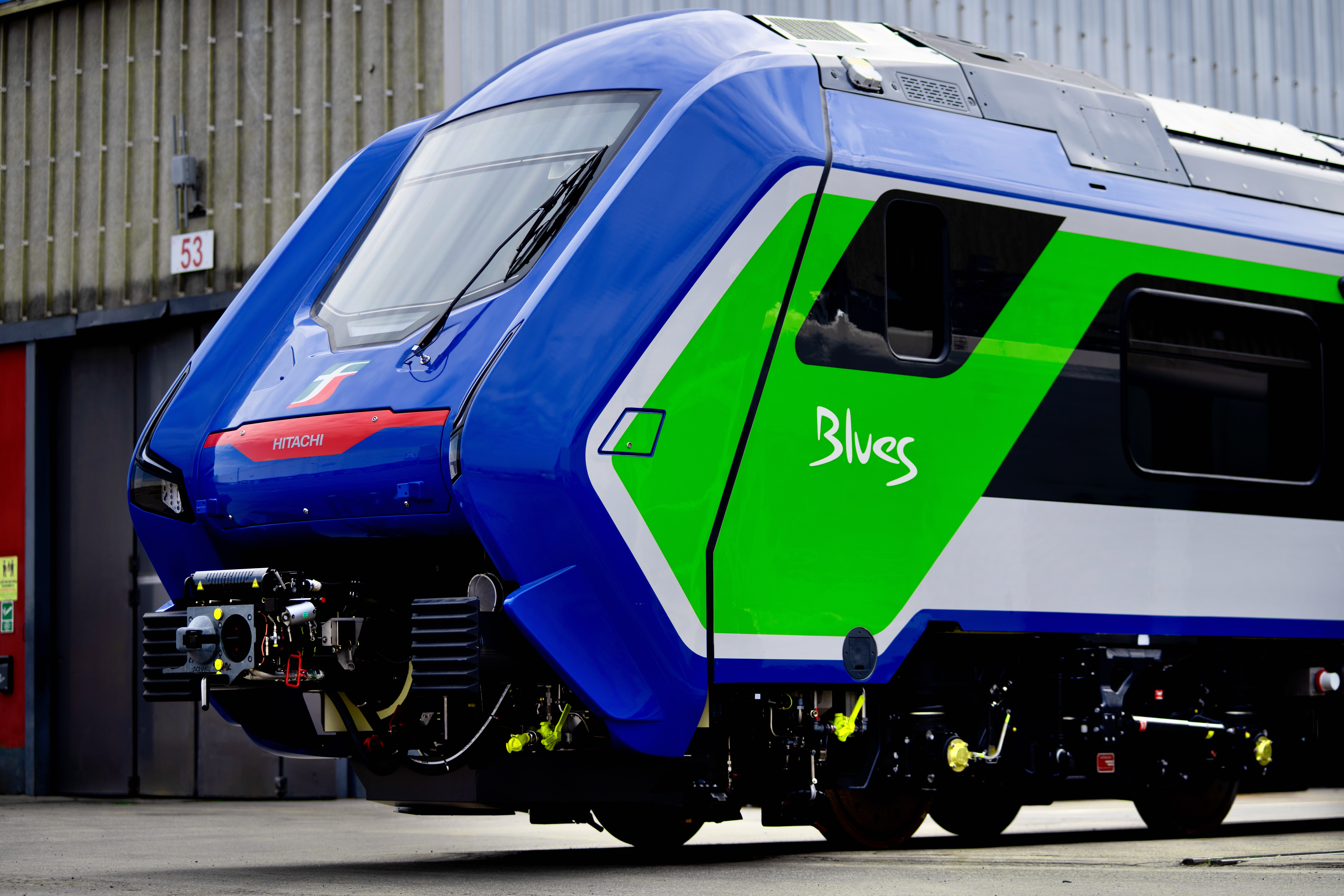
How the Blues train is pioneering Europe’s battery-hybrid rail transport in Italy
Customer: Trenitalia
Project date: 2022
Solution: Blues train derived from Hitachi Rail’s Masaccio platform
Consumers increasingly prioritise the sustainability of their travel choices. Trains like the Masaccio ensure comfortable, clean and efficient rail is an option for as many people as possible across Europe.
Luca D'Aquila - Hitachi Rail
Introducing the Hybrid Regional ‘Blues’ Train

Meet Net Zero by 2050
Challenge
With the EU and national governments across Europe set the target of meet Net Zero by 2050, solutions to decarbonisation are being sought across all modes of transport. While huge progress has been made in the automotive sector, rail has its own unique challenges and opportunities.
In Italy alone, there are 4,000km of tracks (and many thousands across Europe) that are unlikely to be electrified due to cost of new infrastructure.
Electrification, and the construction and maintenance of overhead lines, is not only costly, but also takes time to deliver. These routes can be decarbonised at pace by battery or battery hybrid trains.
Trenitalia recognised the opportunity to realise these environmental goals, while elevating the travel experience for its customers. Seeking to improve passenger comfort, convenience and reliability, it needed a highly innovative and flexible new train, ready to travel anywhere, on any railway line.
Europe's first tri-brid trains
Solution
Trenitalia partnered with Hitachi Rail to develop Europe’s first tri-brid trains – the Blues train – to operate initially in eight different regions across Italy.
Derived from Hitachi Rail’s Masaccio Platform, the Blues train utilises a combination of three power sources (electricity, diesel and battery) enabling it to operate seamlessly and sustainably on electrified and non-electrified lines. The advanced, new generation, hybrid technology provides a sustainable path to decarbonising European transport.
Entered into service in December 2022, the first Blues trains are replacing diesel trains on lines in Sicily, Calabria, Tuscany, Sardinia and Emilia Romagna, and cutting carbon emissions by 50%. The train travels with diesel engines on non-electrified lines, with pantographs on electrified lines, and can use batteries to travel the last mile on non-electrified lines or while stopping at stations, reducing emissions and saving fuel.
By switching off the engines during the arrival, parking and departure from the stations, Trenitalia benefits from up to 50% reduction in fuel consumption and CO2 emissions compared to existing diesel trains, as well as helping to reduce noise pollution. The technology delivers cost savings too. Lifecycle costs for battery solutions are 20% lower than diesel engines, saving on maintenance costs and providing a more reliable service.
The introduction of the Blues train not only addresses environmental concerns but has also revolutionised the passenger experience for Trenitalia’s customers. The four-car composition accommodated up to 300 passengers, reaching a maximum speed of 162 km/h, thereby enhancing performance and reducing journey times. It is equipped with an innovative air conditioning system that optimises usage based on the actual number of passengers on board, and USB and 220V power sockets for greater connectivity. It also has large windows, bike areas and high luggage transport capacity.
Flexible and Scalable
Battery Innovation
Innovation in the automotive market has transformed performance and costs associated with battery technology, and Hitachi Rail is leading the way in pioneering its use in train travel.
The Blues train includes a baseline configuration made up of two battery packs, with flexible and scalable capacity, and a battery management system equipped to measure cell voltage and temperature to maintain balance. The lithium-ion battery cells have proven to be best-in-class in the automotive sector for safety and performance, offering high rate charging capability, low temperature performance and charge/discharge efficiency.
And range for battery trains continues to increase with rapidly improving technology. The Blues train can travel as four-car in battery-electric mode for up to 11 km at 50km/h, 9 km at 70 km/h or 7 km at 100 km/h. As a three-car train, this increases to 12 km at 50km/h, 10 km at 70 km/h or 7.7 km at 100 km/h.

Seamless, Sustainable Journeys
With the launch of the Blues train, Trenitalia heralds a new era of sustainable and versatile rail travel that not only reduces carbon emissions but also redefines comfort, efficiency and performance.
As less than 60% of train lines are electrified in Europe, the Blues Train offers an immediate solution to decarbonise rail travel on regional lines across the continent.
Cuts carbon emissions by 50%
Speeds of up to 162km/h and 1.10m/sec2 acceleration
Up to 25 years’ service life with 16 hours daily operation


